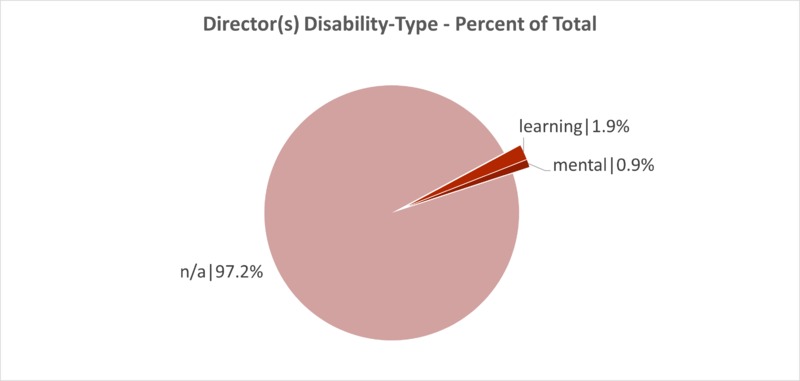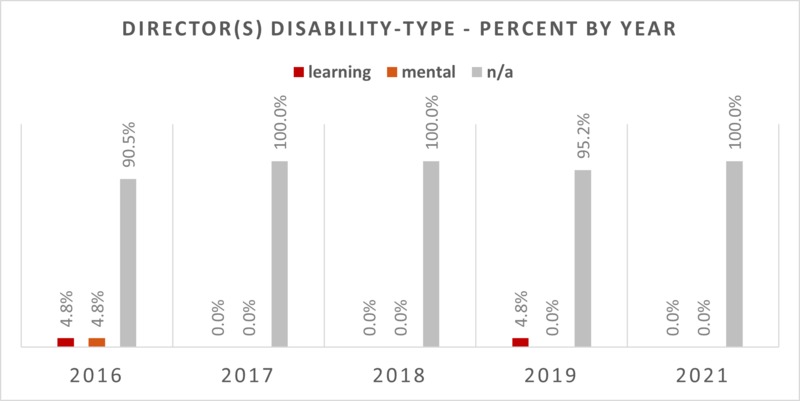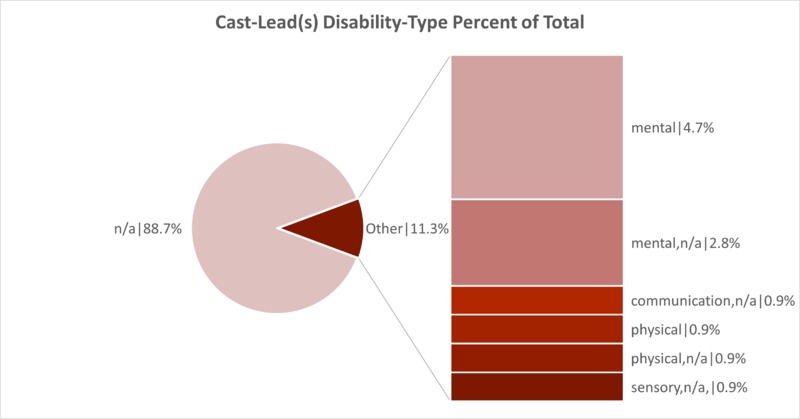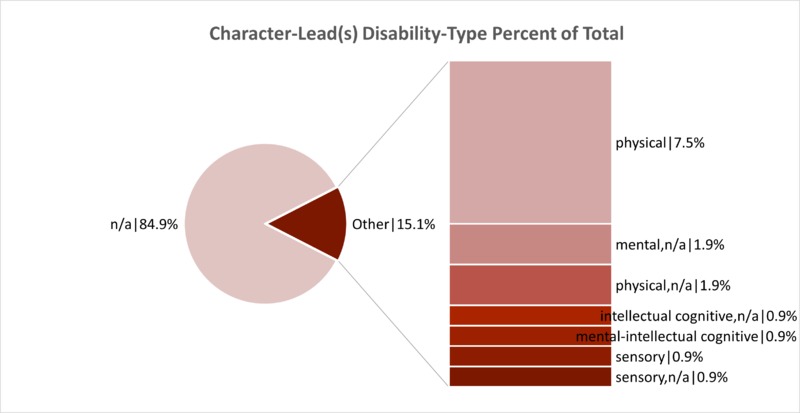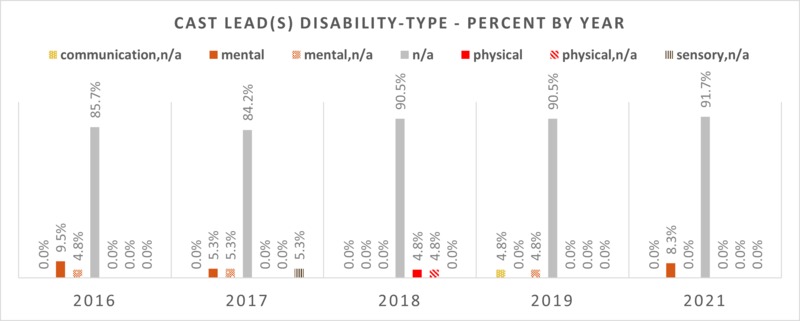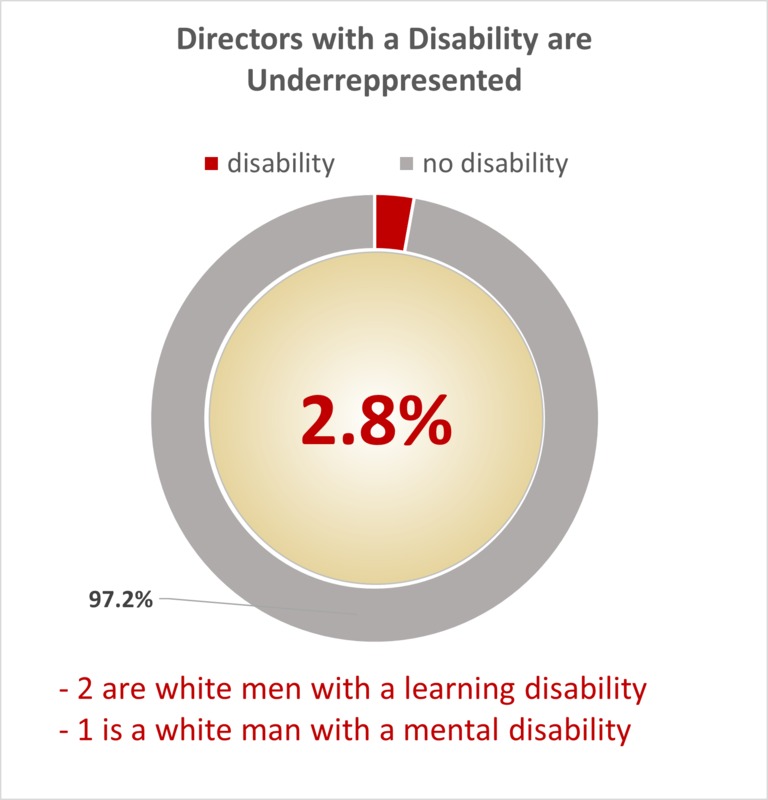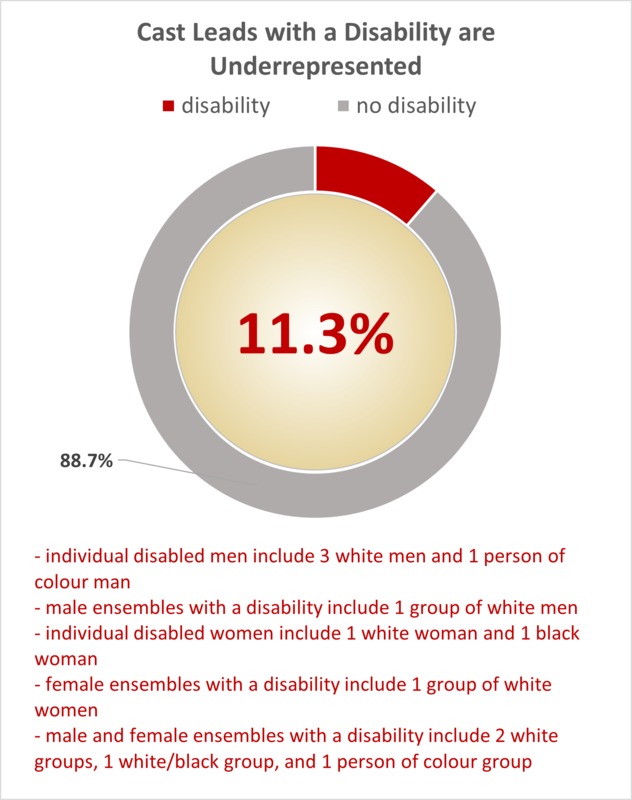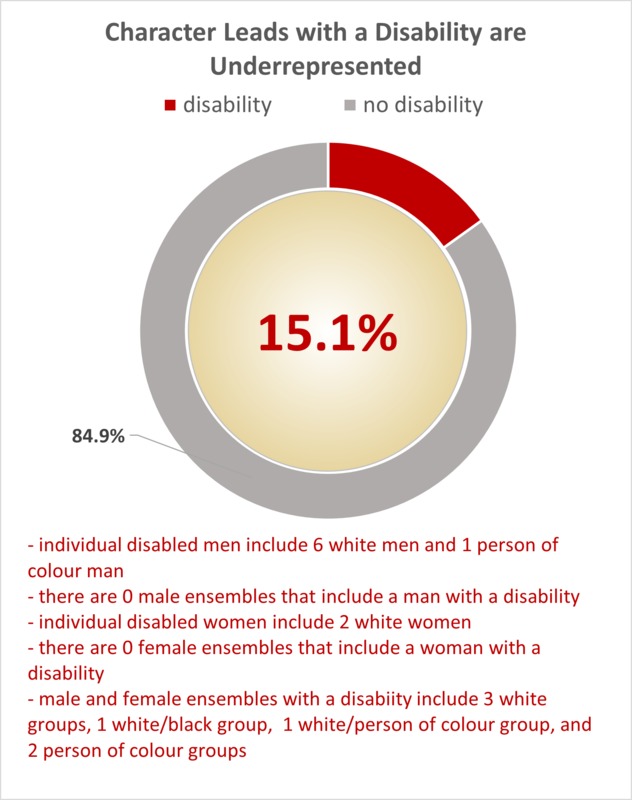- Disability
Director(s)
Looking at the overall percentage of directors identified as having or not having a disability provides a clear demonstration of the lack of disability representation in the film industry. Most directors (97.2%) are n/a, meaning no disibility was identified. The small minority (2.8%) of directors with a disability amounted to three individuals in total, two directors (1.9%) with a learning disability, and one director (0.9%) with a mental disability.
The year over year chart on directors with a disability does not show much more than the overall chart. The main point of significance to see here is that two of the three directors with a disability, one with a learning disability and one with a mental disability, each directed 2016 films and the third, with a learning disability, directed a 2019 film.
Cast Lead(s) and Character Lead(s)
In the charts comparing overall disability of cast and character leads the first point of note is that there are more disabilities present than with the directors. Overall, 11.3% of cast leads and 15.1% of character leads have a disability, while there are only 2.8% of directors with a disability. The main difference between cast lead and character lead charts is the types of disabilities. For cast leads, the highest percent of disability type is mental (4.7%) while for character leads the highest percent of disability type is physical (7.5%).
Like with the directors, the year over year column charts on disability of cast leads and character leads does not show much more than the overall charts did. The main thing that is clear from these charts is that cast leads with a disability are not necessarily playing character leads with the same disability. For instance, in 2016 none (0.0%) of the cast leads had a physical disability while a significant number (14.3%) of the character leads that year portrayed a character with a physical disability on screen.
Spotlight on Minoritized Groups
Turning a spotlight on artists with a disibility compared to those without allowed for a close look at the race and gender of the directors, cast leads and character leads with a disability.
Only 2.8%, or three directors in total were identified as having a disability, and all three are white men.
The cast leads with a disability were 11.3% of the total. This percentage included three individual white men, one group of white men, and one man of colour; one individual white woman, one group of white women, and one individual black woman; and male and female ensembles comprised of two groups of white people, one group of white and black people, and one group of people of colour.
The character leads had the highest percentage of artists with a disability at 15.1% of the total. This percentage included six individual white men, one individual man of colour, and no groups of men; two individual white women and no ensembles of women; male and female ensembles of three groups of white characters, one group of white and black characters, one group of white and person of colour characters, and two person of colour character groups.

